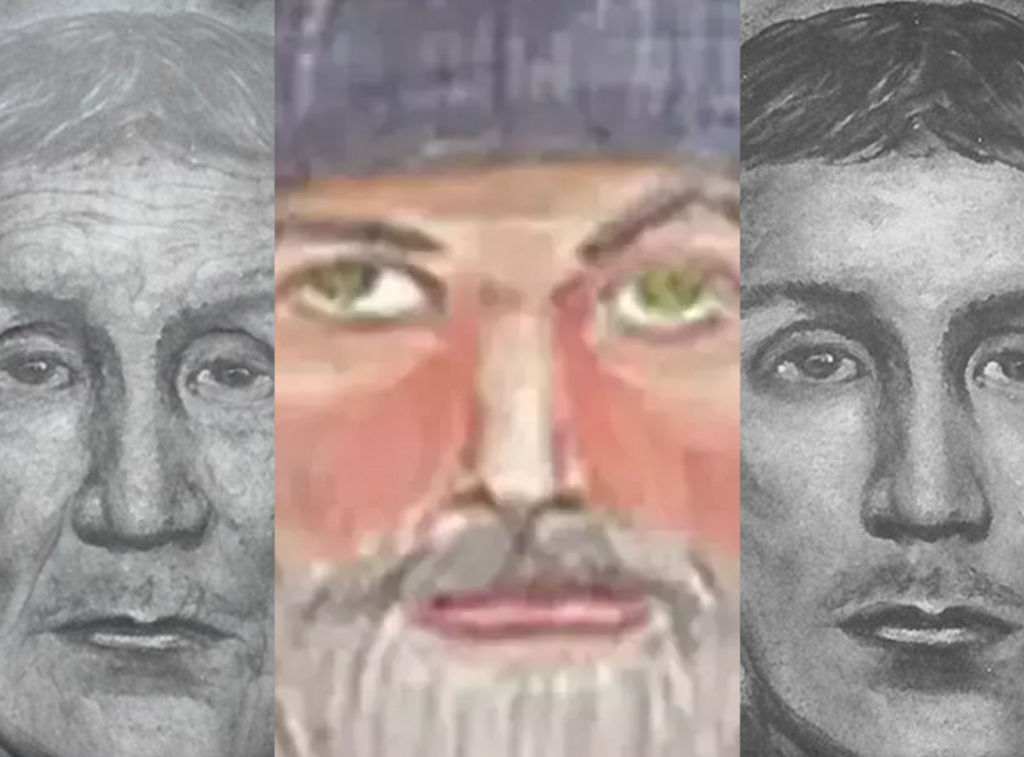
Investigators from multiple states and agencies in the US are digging into whether newly identified I-65 Killer Harry Edward Greenwell – who claimed at least three known victims in the late 1980s – was also responsible for a series of highway murders in other parts of the country.
Authorities last week announced that Greenwell, who died in Iowa in 2013 at the age of 68, had been identified through DNA evidence as the killer of female motel employees along I-65 in the Midwest. They suspected there could be more victims.
So did detectives who had spent decades trying to catch serial killers in their own jurisdictions – but hadn’t been involved the I-65 investigation.
They recognised the modus operandi. The victims resembled each other. And there was a composite sketch with eerily close details to those which had helped identify Greenwell, a travelling railway worker who’d served prison time but lived a quiet farmer’s-market-frequenting life for decades before his death.
“We have to acknowledge that there are similarities ... specifically, the lazy eye,” Capt Raymond Floyd of Investigative Services at the St Charles, Missouri police department, tells The Independent.
The composite of Greenwell – drawn up with the assistance of a surviving victim – showed a tall man with greasy grey hair, a beard and a distinctive eye. A sketch of the I-70 suspect showed a white man with similar features and again – against all odds – a droopy left eye.
Greenwell’s last known murder was in 1990; the I-70 killings occurred over a 29-day period just two years later. Greenwell was older and taller than reports of the I-70 Killer, Capt Floyd says, but “you can’t disregard a potential suspect just based on a composite sketch or a witness testimony itself”.
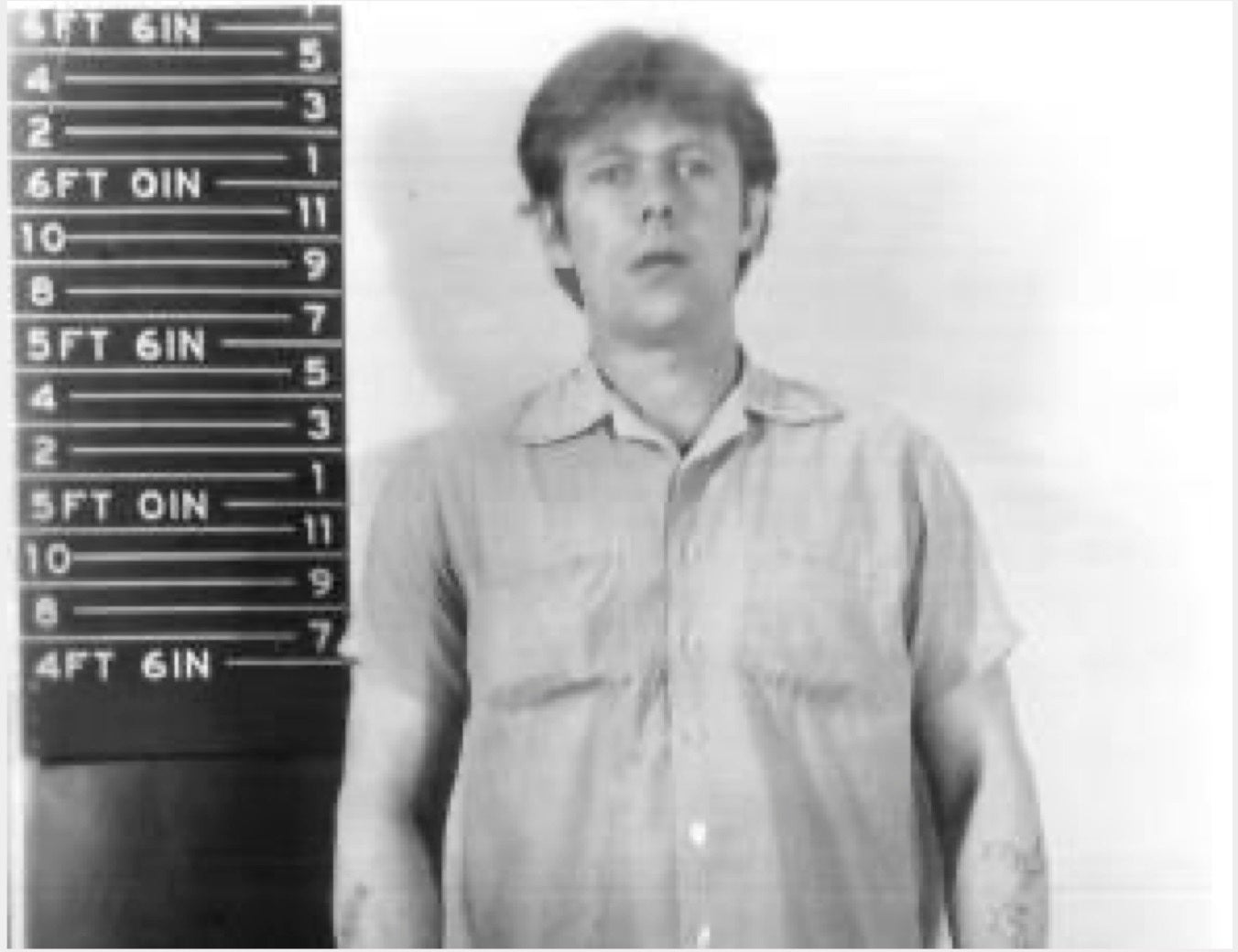
The victimology, time frame and killing methods were too alike to dismiss, he adds; the murderer in both cases “executed those ladies ... [in] a very similar fashion”.
By the time the later crimes were committed, however, Greenwell’s life had changed; he had married a different woman from whom he hid the vast majority of his sordid past – and that could account for a change in MO.
That woman, Greenwell’s widow Julie Jenkins, exclusively told The Independent last week that she’d had no inkling of his brutal crimes – but, from her knowledge of serial killers, believed there could be more victims out there.
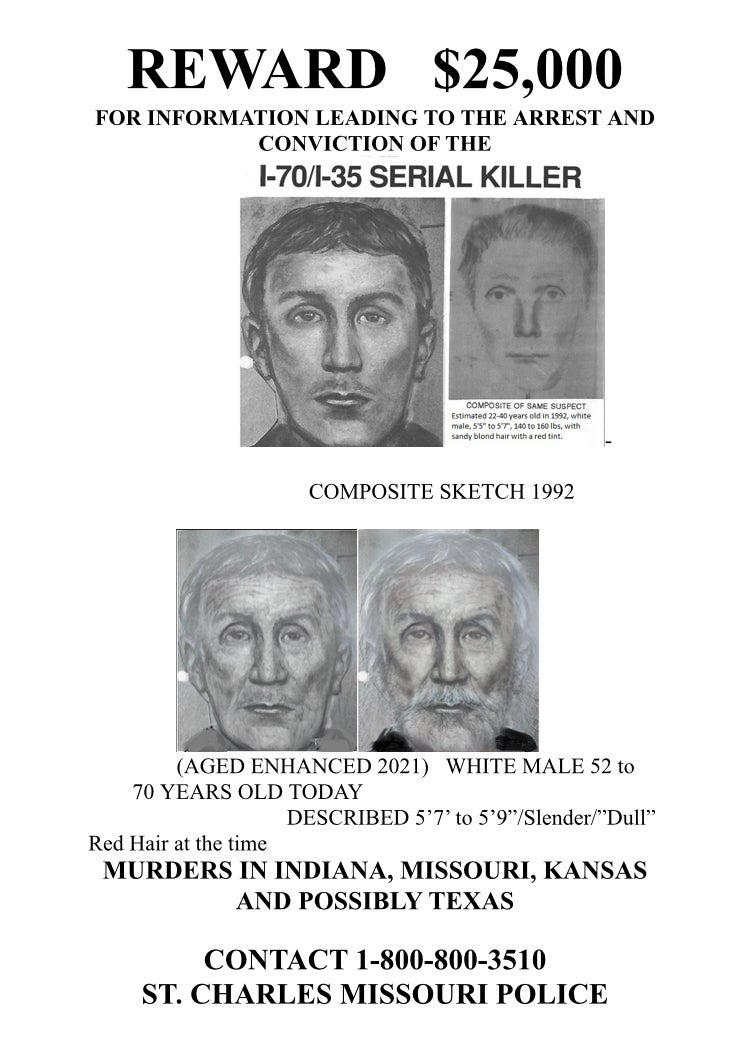
Capt Floyd, for his part, had been doggedly pursuing cold cases – particularly the I-70 serial killer – for some time. He hadn’t heard of the I-65 Killer or Greenwell until last week, when he “started getting texts from other investigators”, reaching out to the FBI along with Indiana and Kentucky authorities, who had triumphantly announced the break in the I-65 case.
The first woman known to be a victim of the I-65 killer was Vicki Heath, a 41-year-old mother of two who had recently got engaged before she was found dead beside the trash cans behind the Super 8 Motel in Elizabethtown, Kentucky on 21 February 1987. She had been assaulted and shot twice in the head with a 38-calibre pistol.
The killer’s second and third victims were both slain on the same day: 3 March 1989.
Mary “Peggy” Gill, 24, a night auditor at a Days Inn motel in Merrillville, Indiana, was found dead in the building’s parking lot by a passing motorist. Jeanne Gilbert, 34, a mother of two who also worked as a part-time auditor at the Remington Days Inn, was also fatally shot with the same .22-calibre gun. The attacker had robbed both premises, making off with $426 (£327) in total.
A fourth woman working the night shift at a Days Inn motel in Columbus, Indiana, was sexually assaulted and stabbed in 1990 but managed to escape the scene. That woman, named only as Jane Doe, gave police a composite sketch, describing a man with greasy grey hair, a lazy green eye and a beard.
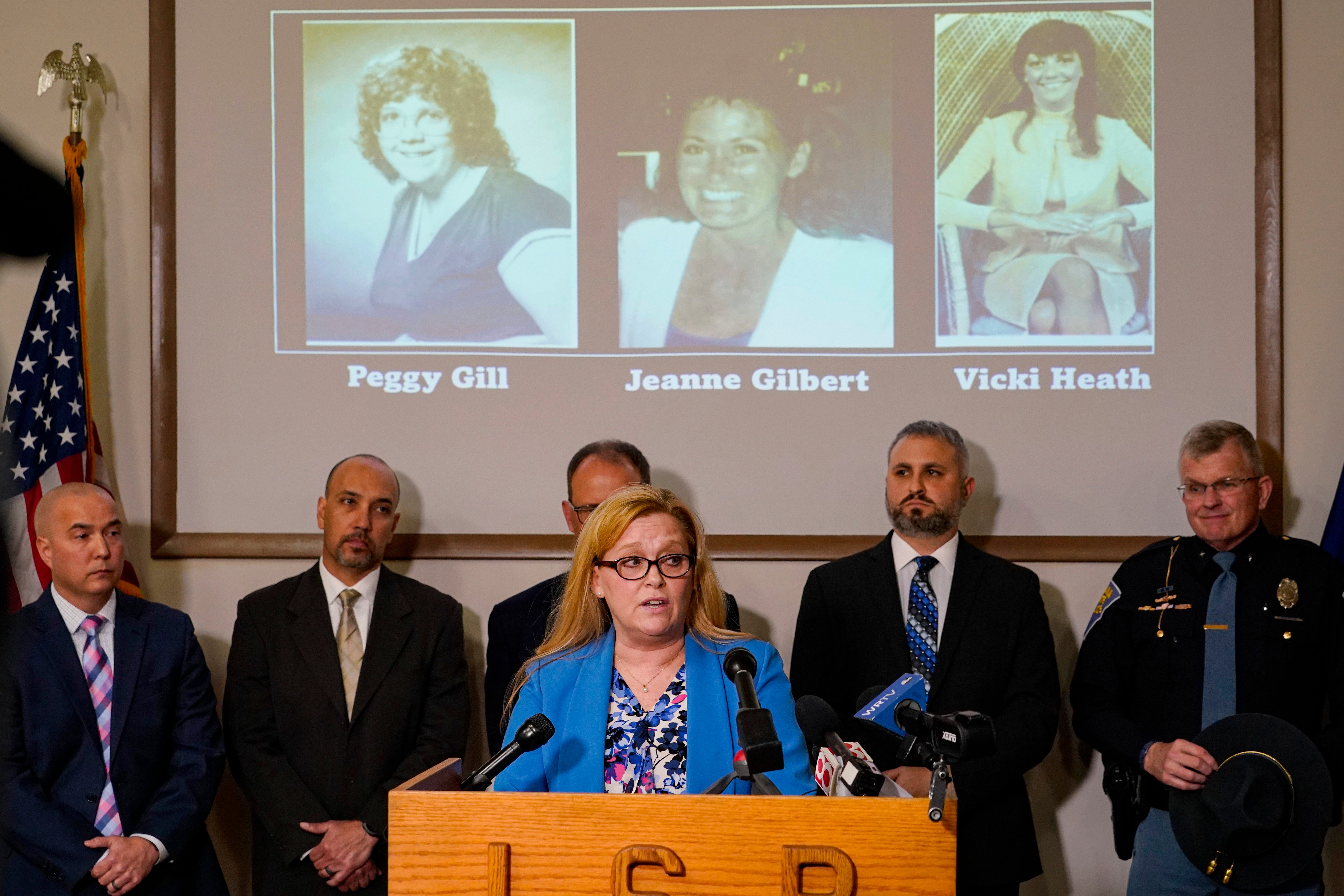
It’s unclear how Greenwell could have gone undiscovered for the remainder of his life – or whether there are additional victims.
He had, however, travelled throughout the Midwest while working on railroad tracks, his widow told The Independent.
And that would perhaps explain some of the other unsolved highway killings within a few years of his verified murderous activity – piquing particular interest from Capt Floyd when he took on his new job in St Charles last year. He’d already been committed to finding the I-70 killer months before the recent announcement, even hosting a multi-state agency event in November where investigators of different highway cases could compare notes and agreed to share information as their probes continued.
With the blessing of the St Charles department, he said, he looked to re-examine cold cases, taking advantage of the “advancement of DNA”. Samples from several scenes across different states are currently at various labs around the country as investigators wait to see, with bated breath, if the highway killings could be related.
The announcement of the I-65 suspect came at a particularly poignant time – the same week as the 30th anniversary of the first known killing attributed to the I-70 Killer.
Shoe store manager Robin Fuldauer, 26, was fatally shot on 8 April 1992 at a Payless in Indianapolis; three days later, 23-year-old Patricia Smith and shop owner Patricia Magers, 32, were killed in a bridal store in Wichita, Kansas.
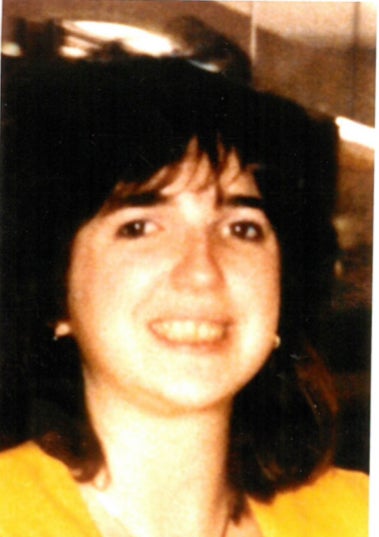
About two weeks later, Indiana man Michael McCown, 40, was shot and killed in his mother’s ceramics store in Terre Haute, Indiana; because he reportedly wore a ponytail and was shot from behind, he could have been mistaken for a woman – in keeping with the patterns of both the I-65 and I-70 killers.
Less than a week later, Nancy Kitzmiller, 24, was killed while working at another shoe store in St Charles, where Capt Floyd now heads the police investigative services. Sarah Blessing, a 37-year-old who worked at a gift shop three and a half hours away near the Kansas border, was found dead on 7 May 1992.
One year later, two women were killed at separate places of work near I-35 in Texas, prompting detectives then, and now, to review whether the crimes were linked. Another woman was attacked but lived.
“We have been in touch with authorities in Texas, and we’re comparing notes and some investigative leads that we’ve had ... to me, the MO is very similar, and it’s my understanding that the surviving victim in the Texas case did think the composite sketch” of the I-70 killer looked like her attacker, Capt Floyd tells The Independent.
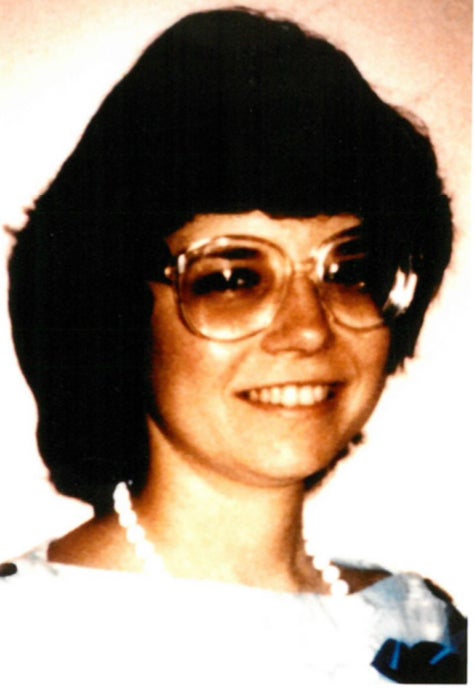
Most investigators are thinking about the families of the victims throughout everything they do, Capt Floyd says, adding that they want to achieve “justice for Nancy and the other victims in this case.
“I think closure ... [is] not the right word. They may have a conclusion, and I know they seek to have the answers – but that’s our motivation.”
He also hopes to bring solace to his fellow investigators who’ve obsessed about the unknown killer for decades, particularly those who worked from his own department, he tells The Independent.
“St Charles ... has invested 30 years in this case,” he says. “This case has never sat on a shelf. It’s not just important to me; it’s probably more important to [the detectives working the case from the beginning].”
The identification of the I-65 Killer, who’d been arrested for burglary and made at least two prison escape attempts before settling into a quiet life in Iowa, was made via familial DNA. It was a triumph of science technology and also gave hope to other highway cold case detectives, particularly within a day’s driving distance of his crimes.

“Any time you see these cases being solved that are 30, 40 years old, it definitely motivates you to try harder and to work harder,” Capt Floyd tells The Independent.
He adds: “It is 100 per cent scary, because murder is fundamentally wrong, so there’s no real good reason to do murder ... Not that you can understand it, [but] you can see where someone in a domestic situation might wind up the victim of a murder [or a] drug dealer, something like that ...
“Unfortunately, what we have on this [I-70] case, same with the I-65 case, is you have people that are really, really good people – that weren’t in those dangerous lifestyles – that just happened to be at the wrong place at the wrong time when the wrong individual came in.”
As Capt Floyd and authorities across multiple states try to connect the dots and bring solace to families, they’re also waiting patiently for the DNA results.
“It’s hit and miss,” he tells The Independent. “We’re optimistic about it; we do think we have a chance of developing a suspect out of this – or we wouldn’t be doing this.”







